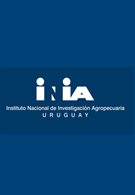ABSTRACT.- Key message: Eight QTL conferring additive APR to YR were identified in wheat germplasm using GWAS. The high accuracy of GP models supports the feasibility of accelerating breeding for YR resistance. Abstract: Wheat yellow rust (YR), caused by Puccinia striiformis f. sp. tritici (Pst), is among the most devastating diseases affecting wheat worldwide. Since 2000, YR has expanded into regions where it was previously not considered an economically important disease. The deployment of YR-resistant cultivars remains the most effective and sustainable control strategy. We assembled a diverse mapping panel (i) identify genomic regions associated with YR resistance using genome-wide association studies (GWAS), and (ii) assess the prediction accuracy of genomic prediction (GP) models for YR resistance. The panel of 366 wheat lines, including germplasm from INIA-Uruguay and other breeding programs, was phenotyped under artificial field inoculations in 2021 and 2022, and at the seedling stage using the same two Pst races used for field inoculations. GWAS-identified eight genomic regions associated with field resistance, located on chromosomes 1B, 2B (three regions), 5B (two regions), 5D, 7B, explaining 4.9-21.2% of the phenotypic variability. None of these regions were identified with seedling resistance to race Triticale2015b, the most widely virulent race, indicating that they conferred adult-plant resistance. Moreover, these regions did not correspond to previously reported Yr genes. Two QTL on 2D and 3A were identified at the seedling stage to race Triticale2015a but did not contribute to field resistance. GP models achieved an average prediction ability of 0.64, highlighting their potential for accelerating the selection of resistant lines. These findings provide valuable insights into the genetic basis of YR and offer robust tools for enhancing YR resistance breeding efforts in wheat. © The Author(s), under exclusive licence to Springer-Verlag GmbH Germany, part of Springer Nature 2025.

